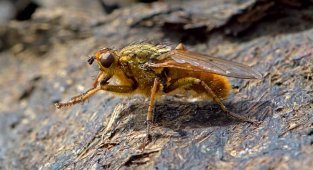Bombardier beetle: attacks the enemy with an explosive stream of boiling water (10 photos)
How can a small beetle carry such a temperature within itself? 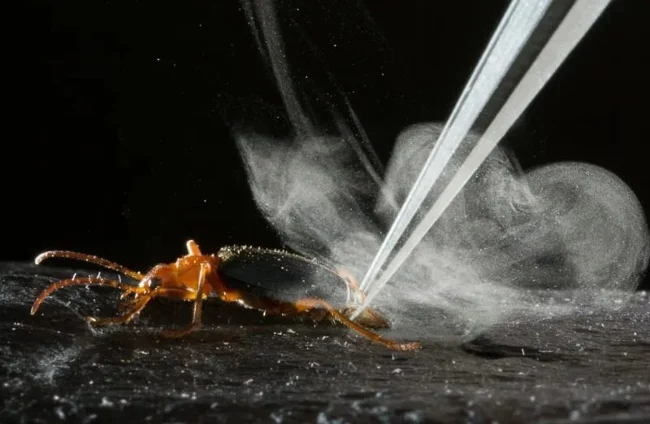
Urgently! Bring a fire extinguisher! Another sofa fighter is torn!
First, let's figure out that the “bombardier beetle” is not one creature, but a collective name for more than 500 (!) species of insects from the ground beetle family. All of them are active predators. They feed on larvae, worms and other beetles. But in order not to become prey themselves in the microcosm, they learned to shoot boiling water from... their butts! 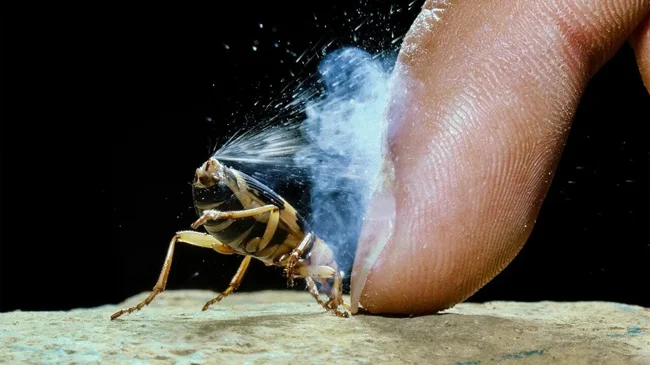
Finally a worthy opponent. This fight will be legendary!
Insects have spent millions of years honing their skills - it's not just bombardiers who use chemical weapons as defense. Some species of beetles from the ground beetle family and the caraboid superfamily also acquired caustic secretions, but only the bombardier beetle evolved before the gunshot. 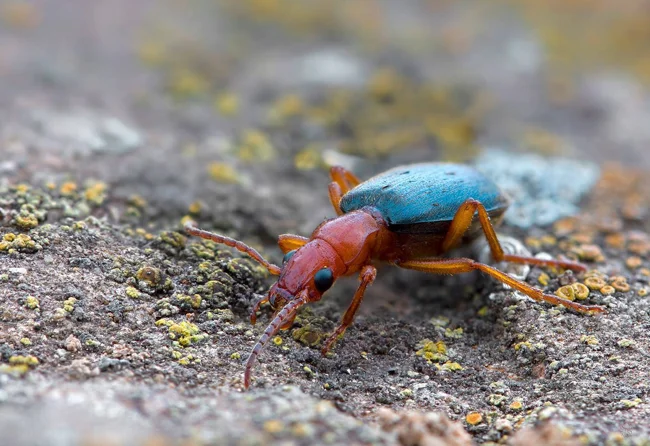
Bombardier beetles live all over the world. The bug itself is unremarkable. Except he has a gun hidden in his back.
Since the discovery of these insects, researchers have been bombarded. Just imagine - a stream of toxic liquid with a temperature of 100 ⁰C bursts out of a living creature! How is this possible?! It's all about how and where the bombing process itself occurs. 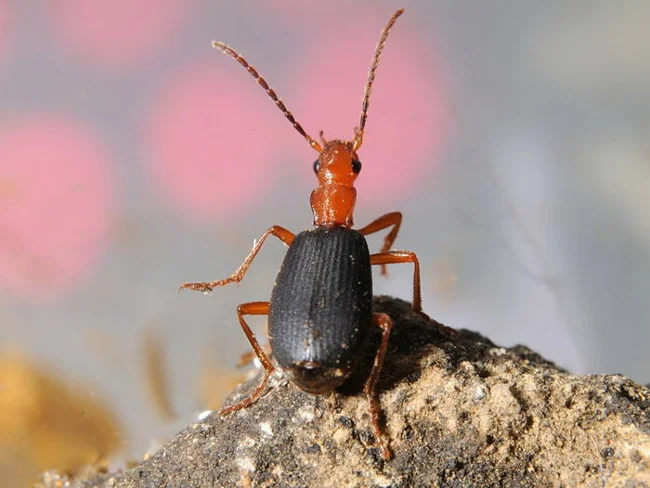
Don't bomb me! For now.
For all explosive insects, the volley process occurs in the same way. How exactly? Scientists discovered this in 2015 using X-rays. To carry out an attack, the beetle has two glands in its abdomen, four reservoirs and a special chamber where the reaction occurs. 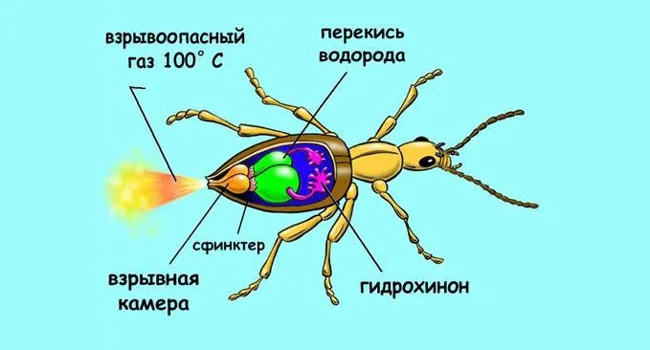
Anatomy of a bombardier beetle. Clearly.
The glands produce a mixture of chemicals - hydrogen peroxide and hydroquinones. The first we all use in everyday life is ordinary peroxide, and the second is used in analytical chemistry for developing photographs, producing paints and medicines, and even as a tanning product. These substances enter two reservoirs, but during the production and storage stage they maintain the beetle’s body temperature—nothing dangerous yet. The other two reservoirs contain the enzymes catalase and peroxidase, which act as the spark in the entire firing reaction. The walls and valves of the storage facilities for these substances are very tight so that nothing mixes ahead of time and explodes. 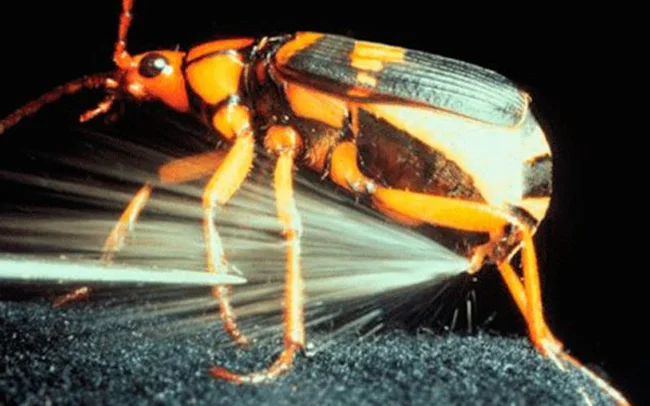
The expression “you pee with boiling water” will now make much more sense...
The fun begins when the insect feels threatened: in a fraction of a second, the reservoirs of chemicals are compressed, the valves open, and the substances enter the reaction chamber. Two simple chemical reactions take place here: first, enzymes break down peroxide into water and oxygen.
Secondly, this very free oxygen from the peroxide interacts with hydroquinones, oxidizing them to quinones. Both reactions produce a huge amount of heat: the mixture in the tank heats up to 100 ⁰C and increases several times in volume (it's almost like dropping a drop of blood into peroxide). 
Let me go, or I'll burn everything here to hell!
But how is it that the beetles are not cooked from the inside? For example, for the human body, an internal temperature above 42 ⁰C is critical, because blood proteins begin to coagulate and break down. And here it’s as much as 100 ⁰C for such a small bug - what’s that even like?! 
Now every arachnophobe will know what to carry with them in case of a spider attack!
The whole secret is in the special material from which the reaction chamber inside insects is made - chitin. This natural biopolymer is also the main component of the exoskeleton of insects - all these wings, legs, antennae are all made of chitin. The compound is particularly strong and very resistant to heat - the maximum rate of destruction is observed at a temperature of 375 ⁰C, so chitin tolerates short-term exposure to 100 ⁰C quite stably. 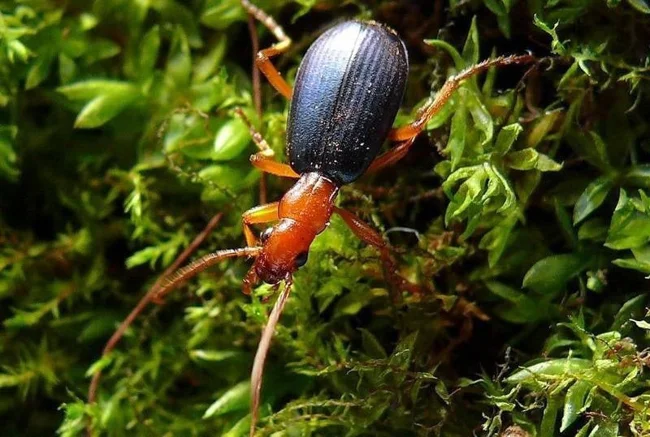
Oh, I shouldn’t have eaten these wings from FSC yesterday.
Another important feature here is how the layers of chitin are arranged in the structure of the reaction chamber. Each layer is superimposed on the previous one almost crosswise, which creates additional strength. This way the chamber can withstand the high temperature and pressure that is generated during the reaction. Thus, when the pressure inside the beetle reaches its maximum and becomes higher than atmospheric pressure, a sharp release of the contents of the reaction chamber occurs outward. The beetles know how to direct the muzzle of their cannon, so that the burning boiling mixture with cotton flies straight towards the offender! 
Even if the beetle did not have time to fire a salvo, it can always fire a salvo inside the predator's mouth!
In one attack, a bomber can produce up to 30 (!) short bursts of reactions, which is quite enough to make predators change their minds about eating it once and for all. And for insects the size of a beetle, such a weapon is completely deadly.

